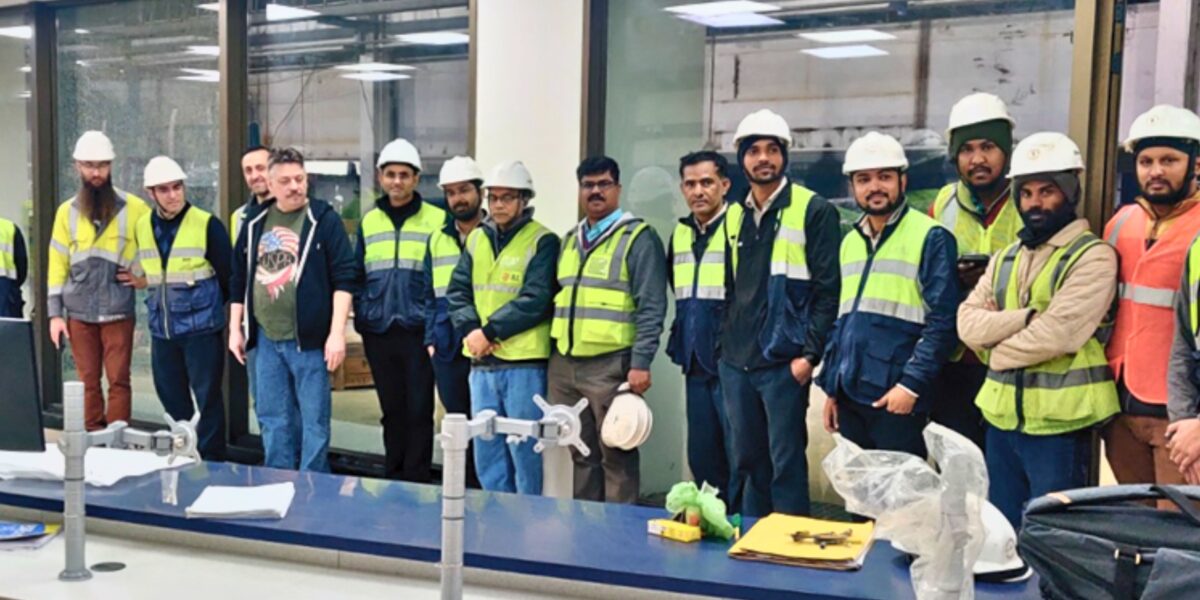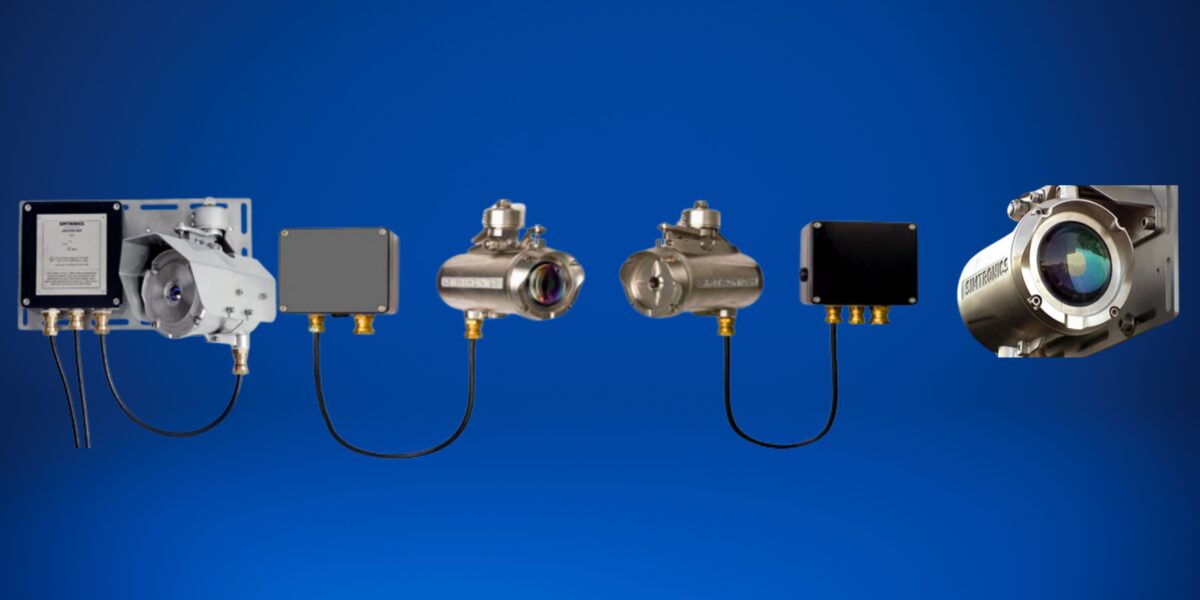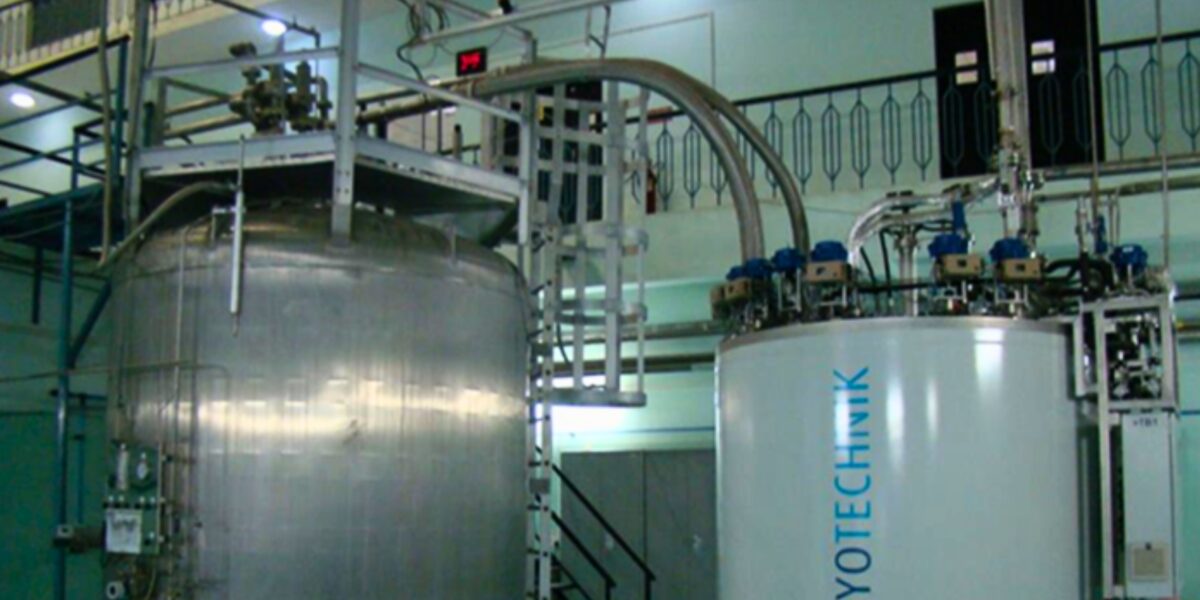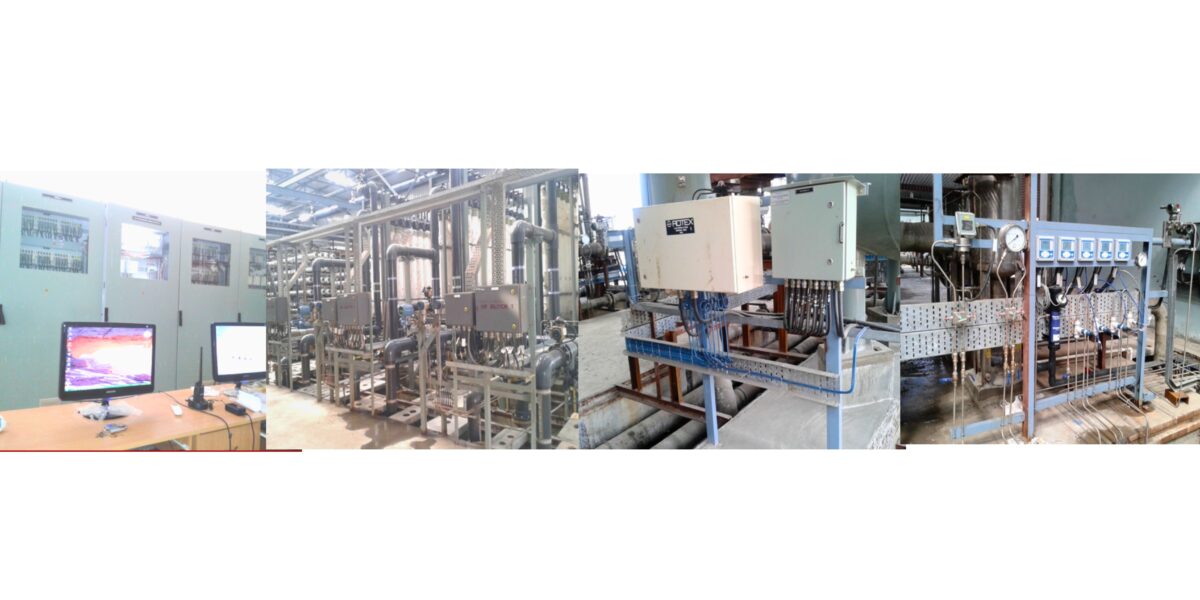
INSTALLATION AND COMMISSIONING
Client: Saint Gobain India Ltd
Project value: 360 lakhs(Float 1,2 & 6)
- Saint-Gobain’s Glass India Ltd is a world leader in manufacturing a variety of float glass products and solutions for architectural and automotive requirements. Over two decades, it has built a Pan-India manufacturing presence with plants in Sriperumbudur (Tamil Nadu), Jhagadia (Gujarat) & Bhiwadi (Rajasthan).
- SJS Automation has played a major role in both Tamil Nadu and Rajasthan plants for record-time completion of plant installation and commissioning following the highest standards of quality and safety.
- The project involved 300 km of cable laying, the installation of 2500 field instruments, 30 km of cable trays, and structural fabrication of 50 tons.
Control System: Mitsubishi Processor with IO nodes and Graphics Display
Scope of work: The Automatic Liquid Filling System is engineered to minimize losses inherent in traditional filling methods. Employing a “top” filling approach, the system sprays liquid into the vapor phase of the cylinder, optimizing efficiency. This method reduces labor requirements and shortens fill times significantly. Featuring two filling stations, each station’s weight indicator is linked to a Programmable Logic Controller (PLC) via Ethernet communication. The PLC orchestrates the filling process, managing states such as Idle, Cylinder Filling, Cylinder Venting, Pressure High, Fill Stop, Inlet Pressure Low, No Cylinder Pressure, and On Hold. This streamlined system ensures precise control and enhances productivity in liquid-filling operations

Project value: 98, 83,810 INR
End User: Mangalore Refinery and Petrochemicals Limited (MRPL)
Technical Consultant: Engineers India Limited (EIL) Delhi.
Project Location: BS-VI project (Expansion)
Application: Open Path Gas Detector for H2s Detection.
Technology:
- Open Path Gas Detection (OPGD): This technology is based on the Beer-Lambert absorption equation and is used to detect the presence of toxic gases like H2S across large areas. It’s particularly useful in industrial environments where these gases might be present due to leaks or emissions1.
- Detection Technology: The detectors use tuneable lasers to scan a narrow portion of the spectrum, minimizing interference from water vapor and other atmospheric conditions. This allows for fast response times and accurate detection of gas concentrations2.
The open path H2S gas detector project seems to be a significant safety initiative, likely related to the Mangalore Refinery and Petrochemicals Limited (MRPL) and their move towards Bharat Stage VI (BSVI) compliance. BSVI is the Indian equivalent of the Euro VI emission standards, aimed at reducing the environmental impact of vehicles.
These detectors, such as the GD1 Laser Open Path H2S Gas Detector by Teledyne GFD, are designed to provide fast, fail-safe detection of H2S gas concentrations in the air1. They are calibration-free, operate even with up to 98% obscuration, and are suitable for use in systems with Safety Integrity Level 2 (SIL2) requirements2. This technology is particularly important in the oil and gas industry, where H2S—a toxic and flammable gas—can pose significant risks to both safety and production
For a project like the one at MRPL, implementing such advanced detection systems would be part of a broader strategy to enhance safety, particularly as the refinery adapts to stricter environmental and safety regulations under the BSVI standards. It’s a proactive measure to ensure continuous monitoring and rapid response in the presence of hazardous gases, thereby protecting personnel and equipment. If you’re looking for more detailed information on the MRPL BSVI project, we would recommend contacting MRPL directly or checking their official communications for updates.
Scope of work: Raja Ramanna Centre for Advanced Technology, Cryognics has a major role to play in both the main fields being pursued at RRCAT viz. accelerators and lasers. Cryogenics is also an essential requirement for conducting experiments with the Synchrotron Radiation Facility at RRCAT in terms of Liquid Nitrogen and Liquid Helium.
The project encompasses the supply, installation, missioning, and testing of instrumentation panels, control room consoles, signal cables, cable trays, a PLC-based system, and large format displays, to facilitate centralized control and monitoring of cryogenic subsystems. These subsystems include Vacuum Pump, Compressor, Vertical Test System, Horizontal Test System, Helium Cylinders, Recovery Compressor, LHe Dewar, Liquification, LR280, Liquid Nitrogen, and Chiller, all seamlessly integrated with the control system.
To ensure comprehensive communication, various protocols are interfaced, including Profibus, ProfiNet, Modbus RS485, and Modbus TCP. This integration of communication protocols enables efficient data exchange and coordination between the different components of the cryogenic system, enhancing operational reliability and control.
SUPPLY, INSTALLATION AND COMMISSIONING
Client: KIMURA CHEMICALS PLANT – PUNE
Project value: 0.35 million USD
Our team successfully undertook the comprehensive Supply, Installation & Commissioning of the E&I package for Kimura Chemicals. Due to the remote location of the plant, proper project planning was essential to ensure the availability of all tools and materials. Also, simultaneous work done by the mechanical team and other contractors made sure that safety had to be ensured to the highest standard. Through meticulous attention to detail and unwavering commitment, we completed the project in strict accordance with Japanese quality standards and met the demanding schedule with precision and excellence.
Capacity : 180 m3/hr capacity
Control System: Schneider premium model TSXH5744M with Redundant processor with IO Capability of 2584 ( DI -1400 / DO – 960 / AI-200 / AO-24)




